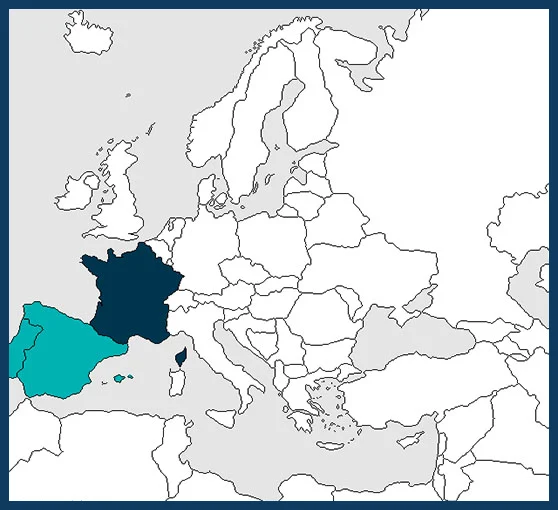01-2015 to 12-2017
€ 415 933
Lionel Garnery
lionel.garnery@legs.cnrs-gif.fr
CNRS – Laboratoire Evolution Génome Comportement Ecologie, Gif sur Yvette FRANCE (Coordinator)
CNRS – Centre d’Etudes Biologiques de Chizé, FRANCE
CNRS-Laboratoire Microorganismes: Génome et Environnement, Clermont Ferrand, FRANCE
Polytechnic Institute of Braganca, PORTUGAL
University of the Basque Country, Leioa, SPAIN

Like numerous natural species, European honeybee populations have faced increasing challenges imposed by different interacting drivers such as malnutrition, agrochemical molecules, climate change, and invasive species. All these global change factors are probably involved in the important colony losses observed all over the world. Moreover, no publications have suggested the spread of invasive pathogens carried by allochtonous unadapted honeybees as a putative supplementary cause of colony losses in Europe.
While numerous studies have already been published to determine factors involved in honeybee decline, paradoxically no particular protocol, especially at ecosystem and subspecies distribution levels, has been developed to counter the effects of colony losses.
The aim of Beehope is to set up, according to a North/South gradient in Europe, genetic conservatories of original naturally distributed honeybee populations. Those populations are particularly interesting to study and preserve in a context of sustainable beekeeping. These honeybee preservation areas will have as missions to:
• Characterize the genetic and eco-ethologic diversity of honeybees from the Western European lineage (M lineage);
• Protect the genetic diversity of those populations;
•Constitute a reserve of diversity usable by the honeybee industry and beekeepers;
• Collect data on impact of climate change on the life cycle of subspecies from M lineage (here, A. m. mellifera and A. m. iberiensis) and on the spatio-temporal succession of their cortege of microbiota and parasites;
• Be able to use the honeybee as a bio-collector and as a biological indicator of environmental quality.
Genetic conservatories will be established and monitored in Portugal, Spain (Basque country) and France covering a wide range of landscapes and climate
To reach its goals, BEEHOPE will implement the following activities:
• Characterize the genetic structure of 5 preserved populations (population genetics / genomics);
• Implement an eco-ethological survey of 5 preserved populations;
• Study the spatio/temporal dynamics of bee pathogens;
• Develop and deliver sustainable beekeeping courses and training.
BEEHOPE will also implement the following specific activities to disseminate the project outputs and involve stakeholders and policy-makers in the project:
• Inform beekeepers about the advantages to breed honeybee ecotypes via bimonthly meetings in each European preservation honeybee center involved in BEEHOPE with different associations of beekeepers and honeybee breeders;
•Create a socio-economic committee (schools, inhabitants, beekeepers, farmers, regional and municipal communities) in each European preservation center to help and assist the director in the managing choice of biodiversity in each concerned area.